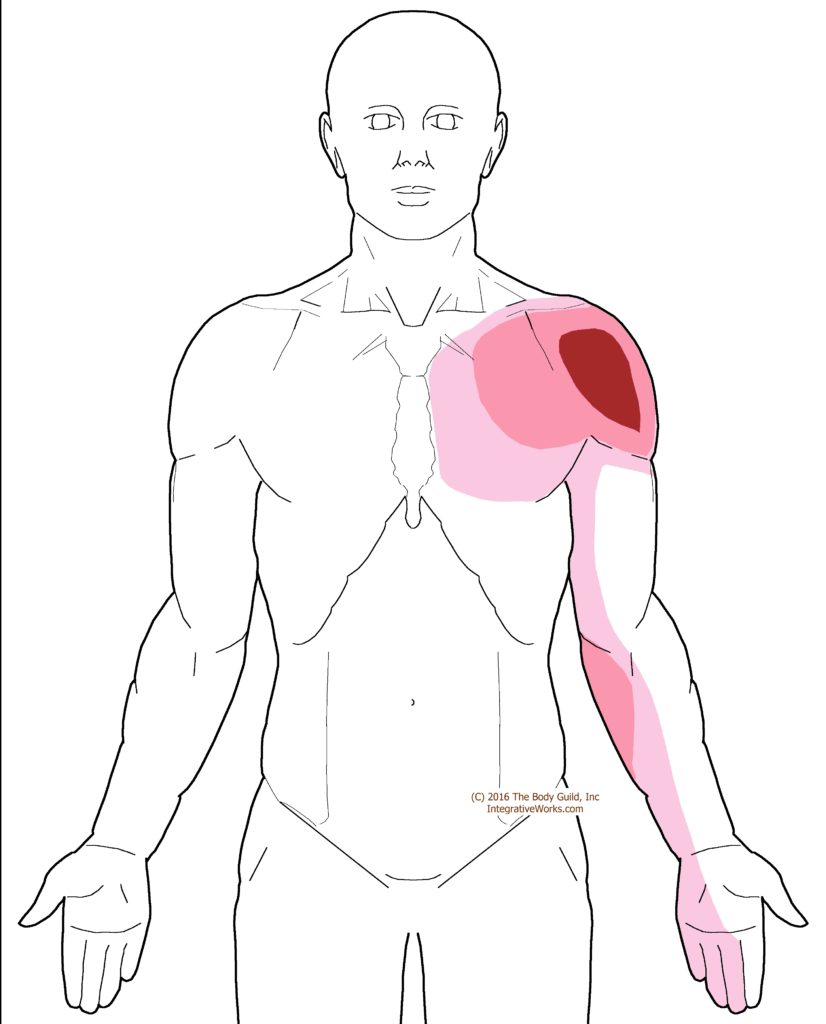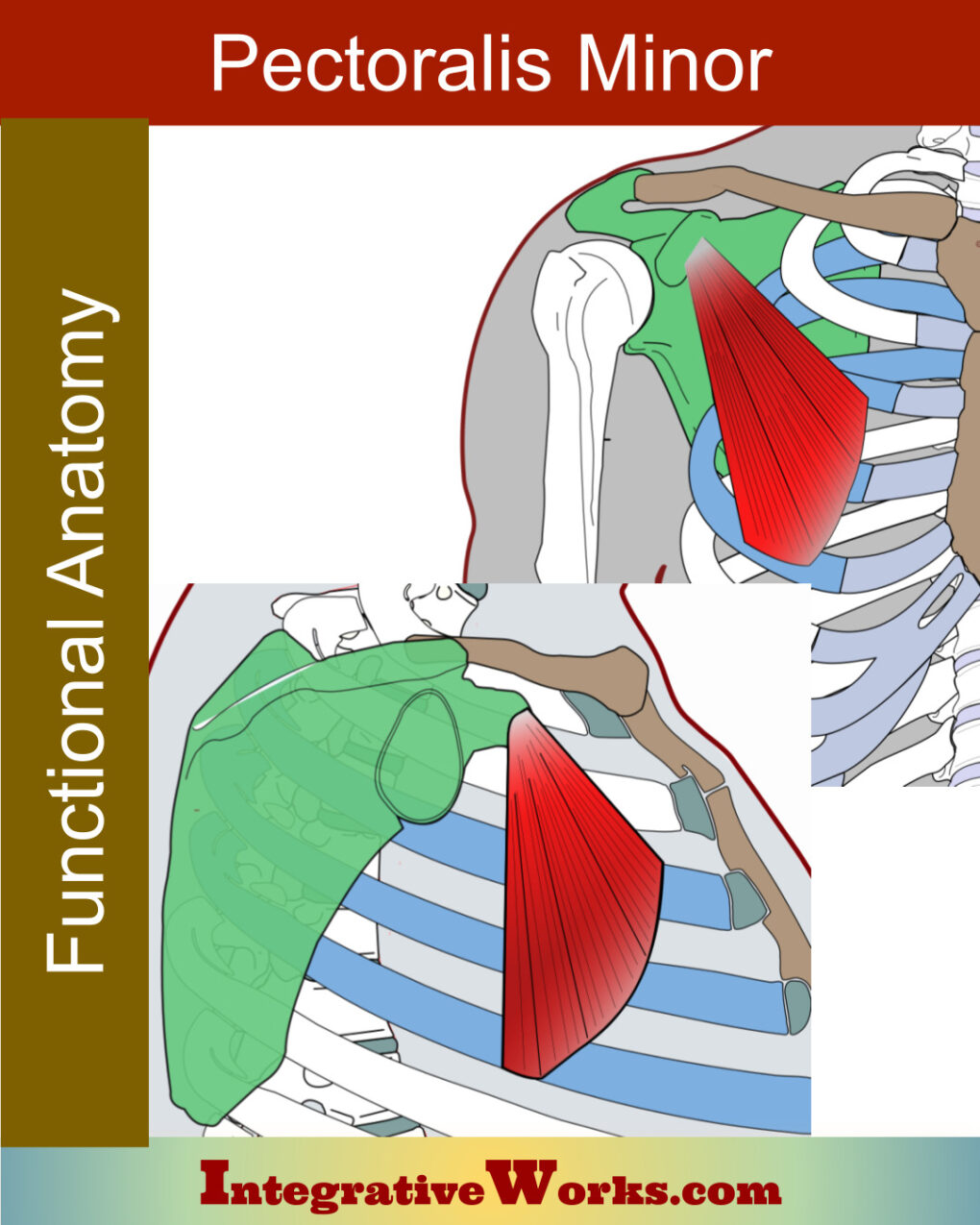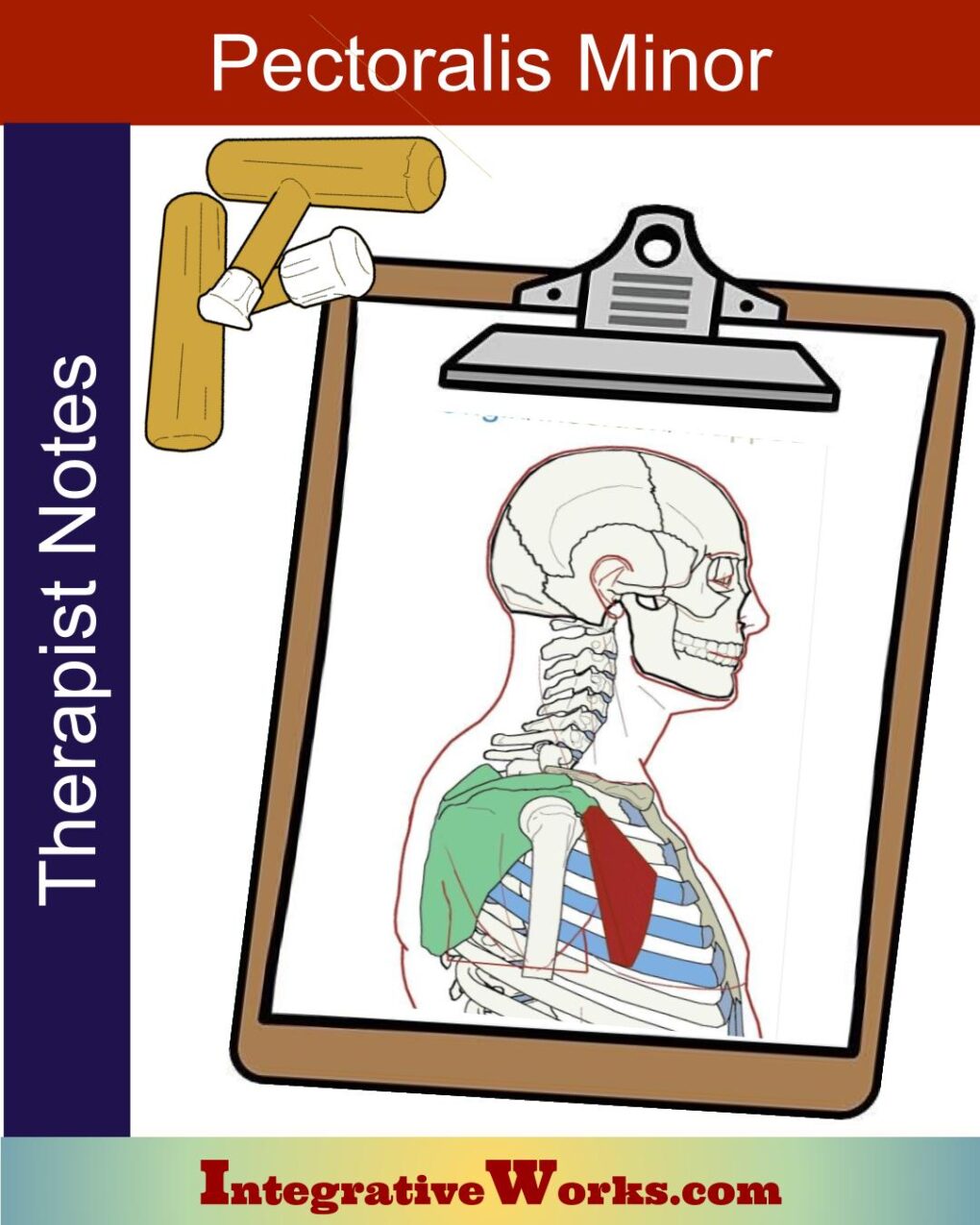Table of Contents
- How People Describe This Pain Pattern
- How You Activate and Intensify This Pain Pattern
- Self-Care – Getting Relief on Your Own
- Musculoskeletal Anatomy Behind Your Pain
- Therapy Notes for Massage and Bodywork
How People Describe This Pain Pattern

People complain of pain in the front of the shoulder when lifting the elbow above the shoulder or back at shoulder level. This pain is less distinct and focused unless the person has a specific activity that they need to do and cannot adapt to their movement. For instance, one case was a weightlifting enthusiast who could not incline bench or do front dumbbell raises above shoulder level. Another case was a woman who could not reach up to get plates off of a high shelf that she could reach before.
People may complain primarily of pain in the upper forearm. There are only a few trigger points that have a focus of pain in this area. So, when it occurs, it is often pectoralis minor or the sternal division of pectoralis major.
Labored Breathing
Occasionally, athletes get this pain during labored breathing. This muscle helps expand the rib cage to increase capacity. usually, this pain lasts for only a short time until the breathing calms.
How You Activate and Intensify This Pain Pattern
These days, this problem is most common among students that carry a backpack. It can create some blunt trauma to the pectoralis minor while flexing it to keep the backpack on.
Also, this problem can be created by slumping at a low desk or pushing down. One client who had this problem performed ultra-sounds all day while seated and pressing down.
Leaning on Elbows
Another more recent problem is that this muscle is overstretched instead of being short and strong. Leaning forward on your elbows is common and creates a complex problem of high and tight shoulders supported by changes in musculoskeletal patterns. There is a simple, effective solution for this in the self-care section for this trigger point.
Thoracic Outlet
This muscle compresses the neurovascular bundle that feeds the arm contributing to thoracic outlet syndrome in severe cases. In this case, weakness or swelling occurs in the arm and hand, along with the restriction in raising the arm up or back.
The Musculoskeletal Anatomy Behind Your Pain
Musculoskeletal Anatomy
This post on anatomy contains standard information about the origin, insertion, function, and innervation of muscles. Additionally, it includes information on functional considerations and anomalies.
Find Related Posts
Anatomy posts have a grid of all related posts. This includes posts on pain patterns, self-care, therapy notes, NMT protocols, cranial techniques, and cases.
Getting Relief on Your Own
Clinically Proven
Self-Care Strategies
Self-Care Posts have common sections to make them easy to follow and understand:
- Activities to Avoid or Change
- Strategies for Quick Relief
- Stretches and Exercise for Longer-Lasting Relief
- Yoga Corner
Therapy Notes for Massage and Bodywork
Better Bodywork
Through Shared Expertise
This post has techniques, tips, treatment routines, and anatomy illustrations to improve the bodyworker’s approach.
Support Integrative Works to
stay independent
and produce great content.
You can subscribe to our community on Patreon. You will get links to free content and access to exclusive content not seen on this site. In addition, we will be posting anatomy illustrations, treatment notes, and sections from our manuals not found on this site. Thank you so much for being so supportive.
Cranio Cradle Cup
This mug has classic, colorful illustrations of the craniosacral system and vault hold #3. It makes a great gift and conversation piece.
Tony Preston has a practice in Atlanta, Georgia, where he sees clients. He has written materials and instructed classes since the mid-90s. This includes anatomy, trigger points, cranial, and neuromuscular.
Question? Comment? Typo?
integrativeworks@gmail.com
Follow us on Instagram

*This site is undergoing significant changes. We are reformatting and expanding the posts to make them easier to read. The result will also be more accessible and include more patterns with better self-care. Meanwhile, there may be formatting, content presentation, and readability inconsistencies. Until we get older posts updated, please excuse our mess.





